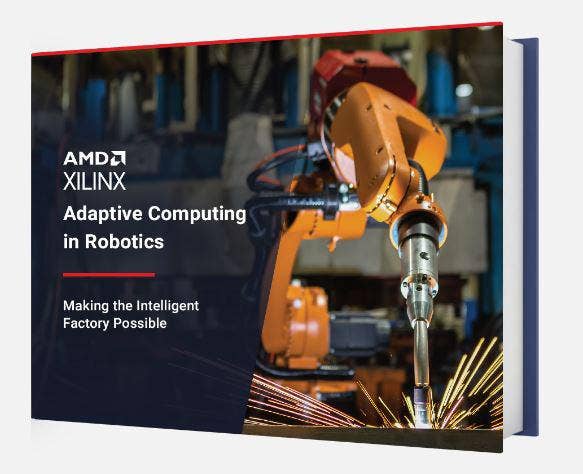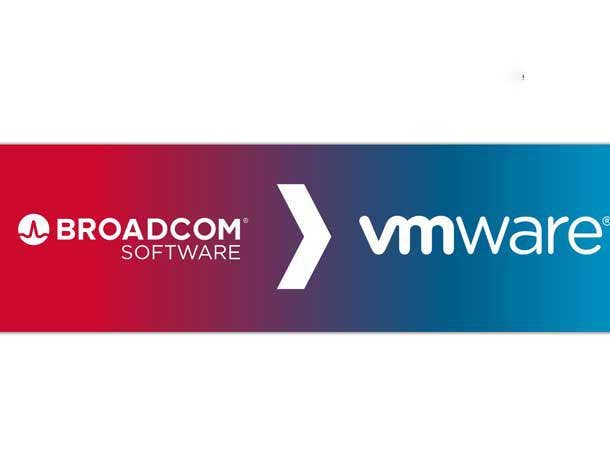The 10 Biggest News Stories Of 2022
Many of the biggest news stories this year, including supply chain disruptions, economic uncertainty and the adoption of hybrid work practices, are repercussions from the COVID-19 global pandemic.

Turbulent 2022
Supply chain disruptions, economic uncertainty, IT industry layoffs, cybersecurity threats and multi-billion-dollar acquisitions. As the year draws to a close, here’s a look at what have been the biggest news stories so far in the IT industry and the channel in 2022.
COVID-19 itself may have faded as a top story. But several of the top news stories this year stem from the ongoing repercussions of the global pandemic and its impact on the economy, the IT industry and the channel.
Continued supply chain disruptions, for example, were a major challenge for the industry. Shortages of semiconductors, components and finished systems have left IT vendors and solution providers scrambling to meet their customers’ needs. And with IT products needed to run on-premises data centers sometimes unavailable for weeks or months, some see the supply chain problem accelerating the adoption of cloud services.
Economic uncertainty kept many IT and channel executives awake at night as they watch for any signs of slowing sales or customer pullback. Many IT companies, from giants like Intel, Cisco Systems and HP Inc., to startups and solution providers initiated cost-cutting efforts and laid off employees.
And in a major shift in how businesses operate, the work-from-home and hybrid work practices imposed by the pandemic on millions of workers now appear to be at least semi-permanent. And that means changes – and opportunities – in the IT products and services the channel provides.
Some of this year’s biggest news stories involve blockbuster acquisitions that are changing the face of the IT industry and the channel. Some, like AMD’s $49 billion buy of Xilinx – the largest acquisition in the history of the semiconductor industry – are done deals. Others, like Broadcom’s pending $61 billion deal to buy virtualization giant VMware, are in the works.
The ongoing threat of malware, ransomware and other cyberattacks against businesses, government agencies and IT companies remains a major story with managed service providers a frequent target. Changes in Microsoft’s channel program and practices and their impact on partners have made headlines this year. And how the IT industry has responded to the war in Ukraine rounds out the top stories.
Here’s our look at the top 10 news stories of 2022, starting with No. 10 and counting down to No. 1. Take a look and see if you agree with our choices.

No. 10: IT Companies Shutter Russia Operations In Wake Of Ukraine Invasion
On February 24, Russia shocked the world when it launched an attack on neighboring Ukraine, sparking a war that has dragged on for more than 10 months. The invasion spurred a wave of denunciations, economic sanctions and other actions, primarily from the U.S., Canada and European countries.
In the days and weeks following the invasion, many of the IT industry’s biggest companies began to disengage from Russia in protest of the invasion. Initially, many halted sales of IT products to Russia and then, over time, shut down their operations within that country.
Just days after the invasion Dell Technologies announced that it had suspended all product sales to Russia. “It’s a great tragedy and very disappointing to see a humanitarian disaster,” CEO Michael Dell said in an interview with CRN. “On everybody’s mind is the situation in Ukraine. Obviously, we’re thinking about all those that are affected and focused on the welfare of our team. That’s our top priority. It’s a horrible situation.”
A short time later Dell committed $15 million to support Ukrainian families through the Michael & Susan Dell Foundation. (On Aug. 29 Dell Technologies announced that it had closed all of its offices in Russia and ceased all business operations within the country.)
In the immediate wake of the invasion many IT vendors instituted sales bans on Russia and halted product shipments to the country including HP, Hewlett Packard Enterprise, Microsoft and IBM-owned Red Hat. In the following months as the war dragged on IT vendors, including HP, HPE, Cisco Systems, Microsoft and IBM, all announced plans to close their offices in Russia and cease all operations there.
Some of the industry’s biggest systems integrators and solution providers also shut down their business operations in Russia. Accenture said it would discontinue its business in Russia and made plans to support its 2,300 employees within the country. DXC Technology exited the Russian market in April and relocated many of its 4,000 Ukrainian workers to safer areas. And EPAM Systems announced in early April that it would exit its Russia business, a task it estimated would take three months.
The withdrawal proved to be a complex undertaking for some. In October SAP acknowledged that its Russia exit was delayed as it sought a buyer for its maintenance business. That same month, Extreme Networks discovered that – without its knowledge – its products were shipped to a sanctioned Russian weapons maker through a Russian distributor.

No. 9: AMD Completes $49 Billion Xilinx Buy In Semiconductor Industry’s Biggest Acquisition
On February 14, chipmaker AMD completed its acquisition of Xilinx, allowing AMD to expand beyond its core CPU and GPU product lineup to add reprogrammable chips, called field programmable gate arrays, to its technology portfolio.
The acquisition is already paying off: In August, AMD reported that Xilinx revenue accounted for 51 percent of its $6.55 billion in revenue in its second quarter.
Going forward the acquisition is expected to significantly expand AMD’s opportunities in data centers, embedded computing and telecommunications. Xilinx also had a presence in other markets including defense, broadcast and consumer electronics. Altogether the acquisition grew AMD’s total addressable market to $135 billion from $80 billion, according to the company.
The cost of the all-stock acquisition deal was originally $35 billion when it was announced in October 2020. But the double-digit growth of AMD’s share price since then boosted the deal’s final price tag to $49 billion – the largest acquisition deal in the history of the semiconductor industry.
AMD’s successful Xilinx acquisition was in contrast to the failed effort by rival Nvidia to acquire British chip designer Arm for $40 billion. Nvidia abandoned that deal in February in the face of regulatory opposition.
Intel, meanwhile, has taken steps in 2022 to aggressively expand its chip manufacturing capacity, including striking a deal in February to buy Israeli chipmaker Tower Semiconductor for $5.4 billion. Tower operates a network of chip manufacturing plants that Intel said will significantly advance its plan to manufacture chips for other companies through Intel Foundry Services.

No. 8: Hybrid Work/Work-From-Home Is Here To Stay
On Aug. 29 HP Inc. completed its blockbuster $3.3 billion acquisition of Poly, a provider of videoconferencing equipment, cameras, headsets and other audio peripherals. The big idea? Combining Poly’s product line with HP’s own portfolio of desktop and laptop PCs, printers and other accessories will make HP the go-to vendor for supporting hybrid work models and work-from-home employees.
“The rise of the hybrid office creates a once-in-a-generation opportunity to redefine the way work gets done,” said HP CEO Enrique Lores in a statement extolling the HP-Poly match. “Combining HP and Poly creates a leading portfolio of hybrid work solutions across large and growing markets.”
When the COVID-19 pandemic hit in early 2020, millions of office workers were confined to their homes. That created a huge surge in demand for laptop and desktop PCs, collaboration applications, videoconferencing services and other products that solution providers scrambled to provide.
Most everyone assumed that work-at-home would be temporary. But the pandemic lasted far longer than many expected and – surprise – many workers discovered they preferred working from home. While offices have reopened around the nation, many businesses and organizations have adopted a hybrid work model where employees split their time between their home office and “The Office.”
In June, HP released the results of a survey of 1,000 office workers in the U.S. and Canada that found that 68 percent of employees expect to work from home at least three days a week.
“The digitalization trend continues to accelerate and the hybrid work model is here to stay,” said Lenovo CEO Yang Yuanqing during an earnings call in August.
The hybrid work model is creating opportunities for solution providers as well as vendors. NWN Carousel debuted its Hybrid Work Suite in January, followed in April with the consumption-based At-Home Essentials and Office Collaboration Room-as-a-Service kits.
“During the pandemic we saw organizations in triage mode of sustaining business with work at home,” NWN Carousel Chief Marketing Officer Andrew Gilman told CRN. “Now hybrid work is real and customers are looking at how do they make hybrid work actually work. It is no longer about swiping a credit card and getting by. It is about the employee experience being consistent whether you are working at home or coming to the office. It has to be consistent, frictionless and something that actually works and is sustainable.”
In October, Cisco Systems addressed the next stage of hybrid work by adding more security and manageability capabilities into its popular Webex platform. “Cisco is all-in on hybrid work,” said Jeetu Patel, Cisco’s executive vice president and general manager of security and collaboration, at the WebexOne event.
Also in October, Cisco partner Aqueduct Technologies said 2022 was shaping up to be a record year with the move to hybrid work generating demand for its networking collaboration solutions.
And in an interview with CRN in November Todd Surdey, Zoom’s new channel chief, touted the opportunities for partners created by the “hybrid world.”
Some businesses and their CEOs have taken steps to attempt to force workers back to the office – one such battle at AT&T received a lot of attention. But in a LinkedIn post on Sept. 7, none other than Dell Technologies CEO Michael Dell chided his fellow CEOs for that approach.
“From my experience, if you are counting on forced hours spent in a traditional office to create collaboration and provide a feeling of belonging within your organization, you’re doing it wrong,” Dell said.

No. 7: Google Buys Incident Response Superstar Mandiant For $5.4 Billion
The security segment of the IT industry has seen a lot of merger and acquisition activity this year including Cloudflare’s $162 million acquisition of Area 1 Security and Ping Identity’s deal to be taken private by Thoma Bravo for $2.8 billion.
But perhaps the most notable acquisition in IT security this year was Google’s acquisition of incident response technology developer Mandiant for $5.4 billion in what observers see as a move to compete with Microsoft and Amazon Web Services. (Microsoft reportedly was considering a bid to buy Mandiant before Google’s deal.)
Google completed the Mandiant acquisition in September with Google Cloud CEO Thomas Kurian saying his company planned to “reinvent security” for customers through the move.
Acquiring Mandiant significantly expands Google’s cybersecurity capabilities in real-time threat intelligence and incident response.
The deal came just four months after Mandiant sold its network, endpoint and email security product business to Symphony Technology Group for $1.2 billion.
In October, Jeff Reed, vice president of product for Google Cloud Security, told CRN that integrating and developing synergies between the Google Cloud and Mandiant technology portfolios was well underway to provide “unprecedented” threat intelligence capabilities to customers and partners.
In October, Google Cloud said it would inject Mandiant technology into its Chronicle cloud-native security service and create “billions of dollars” in new opportunities for the channel.

No. 6: Microsoft Partners Wrestle With Channel Program Requirements, Management Changes
It’s been a turbulent 2022 for many of Microsoft’s 400,000 channel partners as the software giant makes some of the biggest changes to its partner program since the Microsoft Certified Solution Provider program launched 30 years ago.
At the heart of the controversial changes is Microsoft’s New Commerce Experience (NCE), which sets the rules for how customers buy and renew commercial software subscriptions through partners. Microsoft began enforcing NCE requirements for new deals in March.
Some partners have struggled to adapt to the myriad of NCE changes, which impose stringent software licensing requirements and an accompanying 20 percent premium on monthly commitments for popular Microsoft software packages. Partners say the changes force them to renegotiate terms with customers and pushes partners and customers into annual subscription commitments instead of monthly ones.
The software giant has also repeatedly delayed the timeline for moving legacy subscriptions to NCE.
Partner Capability Scores, another major change to the partner program set to start in October, will be used to determine who qualifies as a Microsoft solution provider. That has some partners scrambling to figure out how they can earn enough points to maintain their partner status under the new program.
In March partners launched an online petition disapproving of the program changes, calling the new scoring requirements “impossible” to meet. A CRN poll of 160 Microsoft partners conducted midyear found that 27 percent were dissatisfied or very dissatisfied with NCE, the new partner requirements and the changes in partner requirements. An equal number were more dissatisfied or significantly more dissatisfied with Microsoft as a partner than one year before.
During a fourth fiscal quarter earnings call in July Microsoft Chief Financial Officer Amy Hood said “partner transition work” had a negative effect on sales growth among small and midsize business customers, including for paid Office 365 commercial seats, the Enterprise Mobility + Security business, and Windows commercial products and cloud services revenue.
In late August Microsoft even came under fire from cloud rivals Amazon Web Services and Google who said that changes to Microsoft’s Services provider Licensing agreements were anti-competitive and would lock customers into Microsoft’s cloud. Microsoft recently announced program policy changes around outsourced infrastructure hosting after the company’s software licensing policies stirred controversy in Europe.
The changes continued into September with the announcement of a 16.7 percent discount promotion for new and upgrading Microsoft 365 customers, a new Teams Rooms Pro offer and changes to the Partner Center user interface.
On Dec. 20 Microsoft said it would go forward with plans to end legacy partner incentives for certain products sold under the pre-NCE way of transacting licenses and services from the software giant.
Microsoft’s channel leadership itself has undergone significant changes. Rodney Clark, Microsoft’s channel chief for more than a year, left the company in May. His duties were split between David Smith, vice president of channel sales, and Julie Sanford, vice president of go-to-market, programs and experiences. Nicole Dezen is chief partner officer and corporate vice president of the Global Partner Solutions organization.
In October, Microsoft hired Nina Harding, previously Google Cloud’s chief of global partner strategy and programs, to become Microsoft’s new corporate vice president for global partner solutions in the U.S.

No. 5: IT Companies, Solution Providers And MSPs Battle Ongoing Wave Of Cyberattacks
Over the Fourth of July weekend SHI International, a leading global provider of IT products and services, was the target of what the company called a “coordinated and professional” malware attack that disrupted the company’s systems and operations.
SHI said that its IT and security teams reacted quickly to minimize the attack’s impact and said there was no evidence that customer data were stolen or third-party systems affected. But it wasn’t until July 11, nearly a week after the attack (and after calling in a forensic expert and law enforcement to investigate), before the company said that the “vast majority” of its internal and external-facing systems were fully operational.
The SHI attack was one of many cybersecurity incidents in 2022, including a growing number of malware and ransomware attacks, that the IT industry and the channel – especially managed service providers – have had to defend against.
Cybersecurity incidents have been on the rise in recent years. Ransomware attacks surged by 37 percent in 2021, according to the results of a Sophos survey reported in May. At the RSA conference in June the SANS Institute listed the five most dangerous cybersecurity attack techniques including using cloud services as attack platforms, attacks involving stalkerware against mobile devices, and attacks against multi-factor authentication, system backup and communications satellites.
Cybercriminal organizations have become so proficient that they have begun selling malware kits to amateur hackers for less than $10 and compromised credentials for under $5, according to a report from HP Inc. In a presentation at the August XChange conference (put on by CRN parent The Channel Company), Douglas Bailey, Xcitium EVP of business development and global alliances, told the audience that more “mom and pop” ransomware attackers are going after SMB targets.
MSPs are particularly in hackers’ sights. In May cybersecurity provider ThreatLocker warned MSPs of a sharp increase in ransomware attacks using remote monitoring and management (RMM) tools. That same month international and U.S. cybersecurity authorities said they were aware of recent reports observing an increase in “malicious cyber activity targeting” MSPs and warned that they expected it to continue with stepped-up attacks against managed service providers.
Distributor Pax8 began offering its MSP clients security, prevention, detection and response solutions, based on technology from Todyl, to help them mitigate security risks.
At The Channel Company’s XChange Security conference in July experts from ThreatLocker, Huntress Labs and PhishFirewall issued stark warnings of brazen new attacks against IT service providers. At the same conference Joy Beland, a cybersecurity consultant at Edwards Performance Solutions, said that MSPs and other channel players who fail to significantly beef up their cybersecurity measures to meet more stringent security regulations would become competitive “roadkill.”
Software vulnerabilities have also continued to be a problem. In January MSPs were warned to be on the alert after a Log4j vulnerability was discovered on VMware Horizon servers. In March HP warned that hundreds of its print and digital sending products could be vulnerable to remote code execution and buffer overflow. In April Lenovo offered a patch for millions of laptops that were vulnerable to malware and other attacks. And in May Microsoft confirmed that its Office software contained a zero-day vulnerability called “Follina.”
Cyberattacks continued throughout 2022. Cloud communications company Twilio was breached twice during the summer as a result of phishing attacks that accessed customers’ data. In November Dropbox likewise said a phishing attack gave threat actors access to customer data. Also in November GoTo and its LastPass affiliate confirmed that their shared cloud storage service was hit by unknown hackers.
And in December multi-cloud technology company Rackspace confirmed that a ransomware attack was the cause of a massive service outage that affected its hosted Exchange system and cut email service to thousands of customers.
All signs are that cybersecurity will continue to be a significant issue in 2023. A survey conducted by security tech vendor ESET found that most small and mid-size companies were failing to take the most basic steps to secure their systems despite knowing they were vulnerable to potentially devastating cyberattacks.
One problem is the ongoing shortage of skilled cybersecurity professionals. A report from the International Information System Security Certification Consortium, released in October, found that despite the 5.5 percent growth during the previous year in the U.S. cybersecurity workforce (to a total of 1.2 million), the number of unfilled cybersecurity jobs in the U.S. rose 9 percent to 410,695.
And a Gartner report in October concluded that despite fears of a recession in 2023, spending for cybersecurity technology and services would increase more than 11 percent to $188.3 billion in the new year. That’s up from the expected 7.2 percent increase in security-related spending in 2022.

No. 4: Kaseya’s $6.2 Billion Acquisition Of Rival Datto
Kaseya, a developer of IT management tools used by businesses and managed service providers, shook up the MSP space on April 11 when it announced an all-cash deal to acquire rival Datto for $6.2 billion. The acquisition was officially completed on June 23.
Combining two of the biggest MSP-focused platform providers was expected to put competitive heat on rivals ConnectWise and N-able in such areas as remote monitoring and management, security and professional services.
Kaseya CEO Fred Voccola touted the acquisition as providing its global customers with “more functional, innovative and integrated solutions.” Datto CEO Tim Weller said the deal “brings together a broader array of technology products to create additional opportunities for MSPs.”
But the acquisition has been controversial with concerns about the impact on Datto employees and that company’s MSP-focused culture. A frowny-face emoji reaction to the deal posted three days after the announcement ignited a social media firestorm that included vitriolic comments berating Kaseya.
In an interview with CRN two weeks after the acquisition deal was announced, Voccola tried to assuage the fears and criticisms, saying Kaseya was firmly committed to investing in Datto’s strong channel culture, product set and brand and said there were no plans to shutter any Datto offices.
“We’re spending $6.2 billion to buy an awesome company,” Voccola said. “We don’t buy companies to gut them for profit. Every acquisition we’ve done, we’ve doubled or tripled or in some cases quintupled the amount of investment in the products and support in the business. We’re not buying Datto to destroy it. We’re buying Datto because we want to get better at that, and Datto is the best, so we buy the best.”
At Kaseya’s ConnectIT conference the week the acquisition closed, Voccola sought to reassure Datto employees, partners and customers and provided more details about Datto management changes – including the departure of CEO Tim Weller – and plans for combining the Kaseya and Datto technology portfolios. “It’s our job to make sure that we build the best freaking platform for our customers because they rely on us to make sure it’s complete,” he said.
But closing the deal didn’t end the controversies. Datto founder and former CEO Austin McChord posted a blistering diatribe on GitHub and LinkedIn in July saying that post-acquisition changes were destroying the Datto Culture. (Kaseya CFO Kathy Wagner later issued a statement disputing McChord’s comments.)
The ramifications of the acquisition continued into late 2022. In October, Rob Rae, who as senior vice president of business development was the face of that company for solution providers, left Kaseya. Earlier this month, CRN reported that Ryan Weeks, Datto’s well-regarded chief information security officer, was no longer in that role.

No. 3: Broadcom Moves To Acquire VMware In Blockbuster $61 Billion Deal
On May 26, Broadcom, a $27-billion supplier of semiconductor and infrastructure software products, and virtualization giant VMware disclosed an agreement for Broadcom to acquire VMware in a cash-and-stock deal valued at $61 billion. The announcement confirmed circulating reports of acquisition negotiations between the two companies.
If completed, the acquisition would be one of the biggest in the history of the IT industry: Dell Technologies’ 2016 acquisition of EMC had a $67 billion price tag. VMware is the industry’s virtualization technology leader and is a major player in the market for hybrid-cloud and multi-cloud software. And the deal is likely to impact VMware’s hundreds of channel partners.
The acquisition deal came less than seven months after VMware, which had been majority-owned by Dell Technologies since 2016, became an independent, publicly traded company.
“Together with Broadcom, VMware will be even better positioned to deliver valuable, innovative solutions to even more of the world’s largest enterprises,” said Dell Technologies CEO Michael Dell, in a statement. (Michael Dell retained a 40-percent stake in VMware following its spinoff and is expected to receive $21.65 billion in cash and stock through the deal.) “This is a landmark moment for VMware and provides our shareholders and employees with the opportunity to participate in meaningful upside.”
“By adding VMware, we will bring significant scale to Broadcom’s software business, and reinforce our position as a premier provider of mission-critical platform solutions to enterprises globally,” Broadcom CEO Hock Tan told investors at the time of the announcement.
Broadcom plans to integrate its current software portfolio with VMware, including technology from its earlier acquisitions of Brocade Communications Systems, CA Technologies and the Symantec enterprise security business.
VMware partners, customers, employees and other stakeholders have expressed skepticism about VMware’s future as part of Broadcom. VMware employees, at an online town hall in May following the acquisition news, voiced concerns about cultural synergies and asked: “Why should we stay?’ And a top executive at one national VMware partner, in an interview with CRN, had a message for Broadcom: “It’s a pretty simple message really: Don’t screw VMware up by forgetting about the partners.”
Broadcom executives have sought to reassure stakeholders that the company intends to invest in VMware partners, engineering and sales. In October CEO Tan said in a blog post that as part of Broadcom VMware can provide a better product without raising prices. And in an open letter to the VMware Group in December Tan said that his first priority upon completion of the deal will be to focus on customers and partnerships.
VMware, meanwhile, has seen a steady exodus of executives and managers as the acquisition deal progresses. Channel chief Sandy Hogan announced her departure from the company in June to take a job with SADA Systems, a leading solution provider and Google partner. (In November VMware named former Dell Technologies channel executive Tara Fine as its new North Americas channel chief.) And on Sept. 1 North American channel chief Bill Swales disclosed that he was leaving VMware for a new job at Lenovo.
And earlier this month news leaked out that three VMware general managers in the critical areas of cloud infrastructure, networking and security were leaving the company. VMware quickly named replacements for the three and issued a statement that cited its “deep bench of top talent aligned with our multi-cloud and SaaS transformation objectives.”
Tom Krause, the Broadcom Software president who was expected to lead VMware post-acquisition, left Broadcom on July 15 to become CEO at Citrix Systems, running that company and its Tibco Software acquisition.
The companies are aiming to complete the acquisition during Broadcom’s fiscal 2023, which began Nov. 1, 2022. VMware shareholders overwhelmingly approved the acquisition on Nov. 4 and the deal has been approved by regulators in some countries including Brazil, Canada and South Africa.
But the acquisition deal is facing headwinds. In July the U.S. Federal Trade Commission said it was undertaking a more stringent “second request” look at the deal, a regulatory hurdle that has derailed other tech industry mergers.
Equally concerning for Broadcom, on Dec. 20 the European Commission, the governing body for the European Union, said it had opened an “in-depth” investigation of the proposed acquisition. Commission officials expressed concern that through the deal Broadcom could restrict hardware competitors’ ability to interoperate with VMware’s virtualization software.

No. 2: IT Companies Commence Layoffs, Cutbacks In Uncertain Economy
On Oct. 27 Intel CEO, citing “difficult decisions affecting our loyal Intel family,” outlined a comprehensive plan to cut costs – including employee layoffs – that will reduce spending by $3 billion in 2023 and as much as $10 billion by 2025. The layoffs are scheduled to begin Jan. 31.
The cost-cutting moves came as the company experienced what Gelsinger, in a conference call with financial analysts, called “an abrupt and pronounced slowdown in demand” that the company began to see as early as June.
Intel was far from alone in 2022 as the IT industry, including major vendors, startups and solution providers, wrestled with the fallout from continued economic uncertainty.
Reading the economic tea leaves was a challenge amid soaring inflation, slowing economic growth (including two quarters of negative GDP), rising interest rates, falling stock markets and low unemployment. At times IT vendors and the channel struggled to square the mixed economic news with their own financial performance and customer demand.
Perhaps one of the earliest signs of trouble came in May when Sequoia Capital, one of Silicon Valley’s top venture capital firms, issued a warning (in the form of a 52-slide presentation) to startups that the IT industry was in a “crucible moment” of economic uncertainty. The missive, which set off alarms throughout the industry, recommended that startups Sequoia had invested in cut costs or face a possible “death spiral.”
Some segments of the IT industry have taken a hit, particularly on the PC side. Global PC shipments fell 15 percent in the third quarter, according to IDC, which is forecasting the PC and tablet computer shipments will remain slow in 2023. That was reflected in some companies’ operating results: In August HP Inc. reported a significant drop in consumer hardware sales in its fiscal third quarter.
But others have seen less impact. In October Apple reported a record fiscal 2022 fourth quarter (despite slower iPad sales) and better-than-expected results for the entire year. In November Cisco Systems reported its largest quarterly revenue ever for its fiscal 2023 first quarter. Also in November Hewlett Packard Enterprise reported record results for its fiscal 2022 fourth quarter thanks to demand for its GreenLake as-a-service offerings.
Other companies reported mixed results. In October Microsoft reported a slowdown in its PC business in its fiscal 2023 first quarter while sales of its cloud offerings showed strong growth.
But the big news for the second half of 2022 was the steady stream of layoffs initiated by many leading IT companies including Avaya, Cisco, F5, Microsoft, Oracle, Salesforce and Twilio. Hyperconverged infrastructure software provider Nutanix laid off 270 employees in August citing the “challenging macroeconomic environment” and supply chain disruptions. In November HP said it will reduce its employee headcount by more than 6,000 over three years while chip manufacturer Global Foundry said in December that it would lay off up to 800 workers.
Cybersecurity providers were especially active on the layoff front including Aqua Security (10 percent of its employees) Lacework (about 20 percent of its workforce), OneTrust (25 percent of its employees), Cybereason (10 percent of its workers), IronNet (17 percent of its workforce), Malwarebytes (125 workers) and Snyk (198 employees).
Employees at leading solution providers were not spared. In November SADA announced that it was cutting 11 percent of its 950-employee workforce with CEO Tony Safoian saying: “This is something we’ve never done before, and it is the most difficult decision we have made as a company.”
As the IT industry readies for 2023 the economic picture doesn’t appear much clearer. In October, at The Channel Company’s Best of Breed conference, economist and former Congressional Budget Office director Dr. Douglas Holtz-Eakin said that “the chances of a modest recession are quite high” by the middle of 2023.
Just last week, Amazon Web Services CEO Adam Selipsky, in a note to thousands of company employees, warned of “headwinds ahead in the world.”

No. 1: Supply Chain Disruptions Create IT Product Shortages, Accelerate Cloud Adoption
Supply chain disruptions, leading to product shortages and order backlogs, created major challenges for the IT industry in 2022 as vendors and solution providers worked to meet customer demand for servers, PCs, mobile devices and other systems.
And as the year progressed, there’s been growing evidence that supply chain problems may be having a more fundamental impact on the IT industry by accelerating the migration to cloud-based computing.
Supply chain problems were evident as early as the first year of the COVID-19 pandemic and became fodder for the nightly news in 2021 as container ships waited in line off the California cost to unload their goods. But disruptions in supply chains really hit the IT industry in 2022.
In February, for example, Xerox warned that it had a $300 million order backlog that it could not ship because of supply chain issues. That same month Dell Technologies said it was feeling the impact of shortages of integrated circuits and other components, including network controllers and microcontrollers, that go into the company’s PCs, servers and storage systems.
In April Apple warned that production shutdowns by key manufacturers in China could result in a major hit to sales for 2022. In November new pandemic lockdowns at the Foxconn assembly plants in Zhengzhou, China, impacted the production of Apple’s new iPhone 14 Pro and iPhone 14 Pro Max.
In May Lenovo warned that COVID-19-related production shutdowns in China would slow product shipments. And in July, citing supply constraints and logistics problems, market researcher IDC said global PC shipments fell 15.3 percent in the second quarter.
Networking tech giant Cisco Systems was among the IT vendors hit the hardest as product and component supply constraints caused the company’s order backlog to soar 130 percent year-over-year to $15 billion as of May – an all-time high – and
continued to grow through the summer. To mitigate the effects of the shortages Cisco worked closely with its key suppliers and contract manufacturers and paid significantly higher logistics costs to get products and components to where they were most needed.
“We’re not demand-constrained, we’re supply constrained,” said Cisco CFO R. Scott Herren during an earnings call in August. (In November the company reported that it had chipped away at the backlog during the fiscal 2023 first quarter as it saw an easing of supply chain constraints and component shortages.)
HP Inc., which reported a $10-billion order backlog in 2021 due to supply chain disruptions, hired a chief supply chain officer who is taking such steps as revamping the company’s ERP systems and developing better supply chain monitoring and forecasting processes.
Solution providers and MSPs are finding ways to survive – and even thrive – amidst the supply chain challenges. World Wide Technology CEO Jim Kavanaugh told CRN that his company tries to help customers better anticipate long-range requirements while being “creative” to meet their more immediate “mission-critical” needs. MSPs at the XChange August 2022 conference (put on by CRN parent The Channel Company) said they are battling the supply chain problem by tackling infrastructure upgrades in smaller chunks, working with customers to develop multi-year IT plans, and encouraging cloud adoption when products for on-premises systems aren’t available.
And that last trend may be the ultimate impact of the supply chain problem: An acceleration to the cloud (infrastructure-as-a-service, platform-as-a-service and software-as-a-service) by businesses and organizations who are unable to buy the equipment they need for on-premises data centers.
“When customers can’t get HPE, Cisco, Dell for months – sometimes we‘ve had customers that can’t get it for quarters – then what are you going to do? You’re going to spin it up in the cloud,” Jason Geis, CEO and co-founder of CloudWerx, a fast-growing Google Cloud partner, told CRN.
As 2022 drew to a close there were signals that some supply chain disruptions would continue into 2023.
In October John Tonthat, executive director at distributor Ingram Micro, said in a keynote speech at the GreenPages Cloudscape 2022 conference that while shortages of client devices were easing up, supply chain shortages in data center gear, including networking, compute and storage systems, would persist into late 2023. “It’s not getting better,” he said.
In November TD Synnex CEO Rich Hume, in an interview with CRN, likewise said that supply chain issues on the PC side of the business had diminished, but many parts of the data center and infrastructure side of IT were still experiencing supply delays.